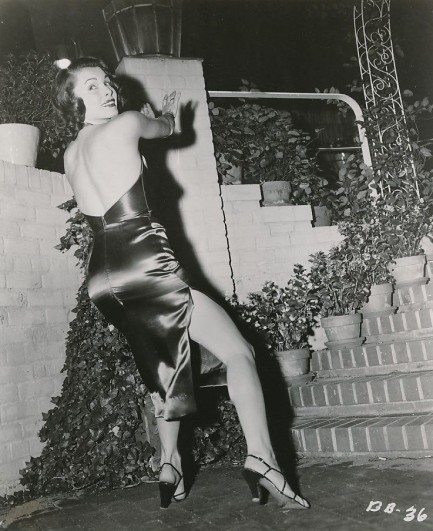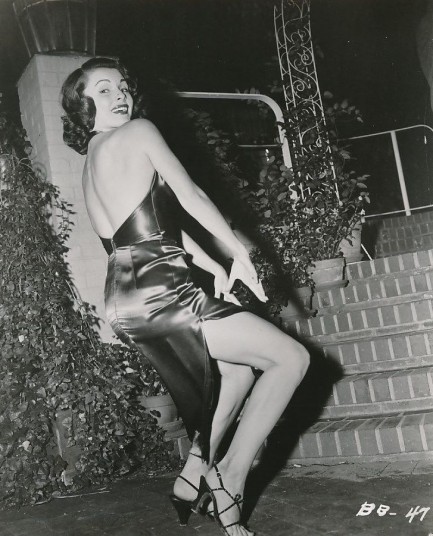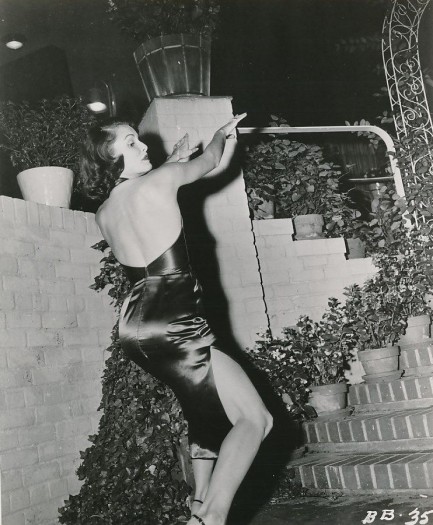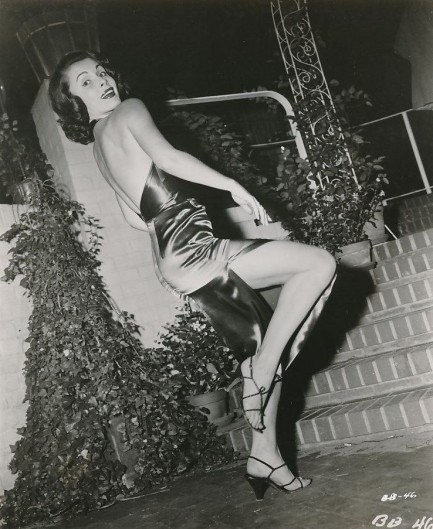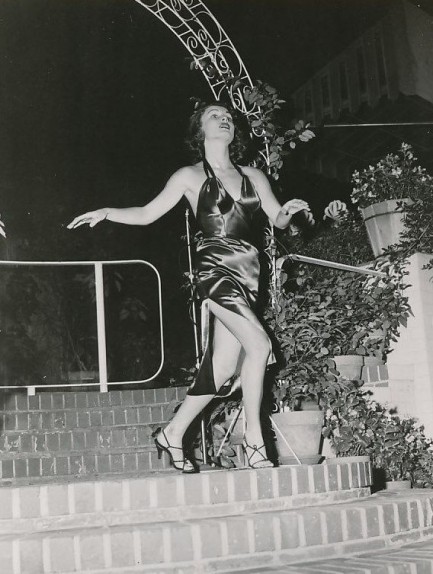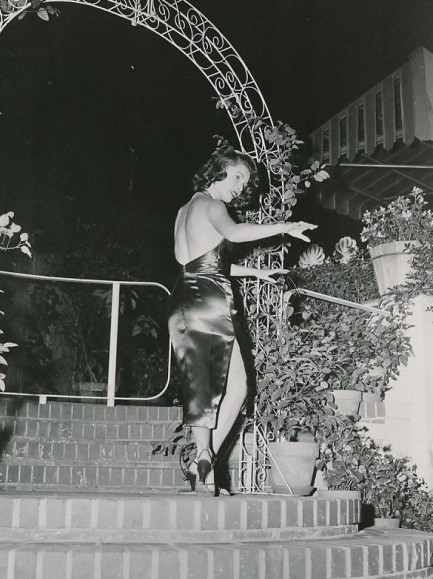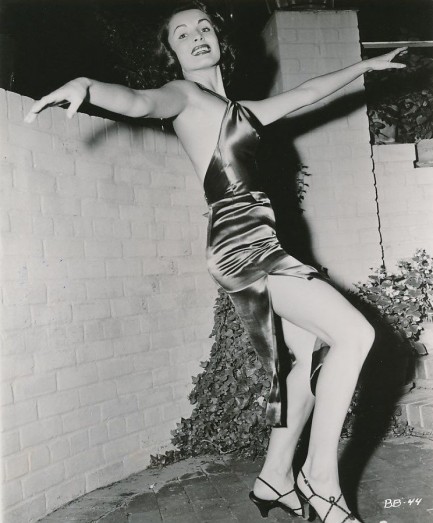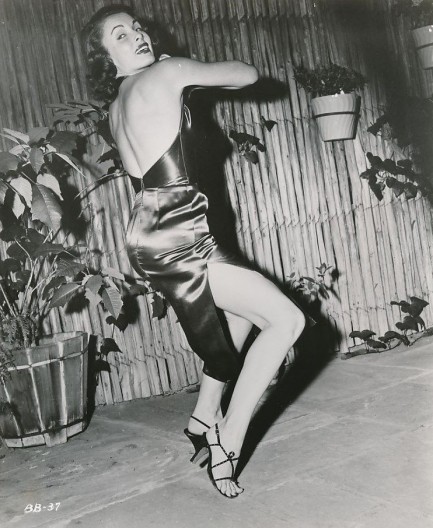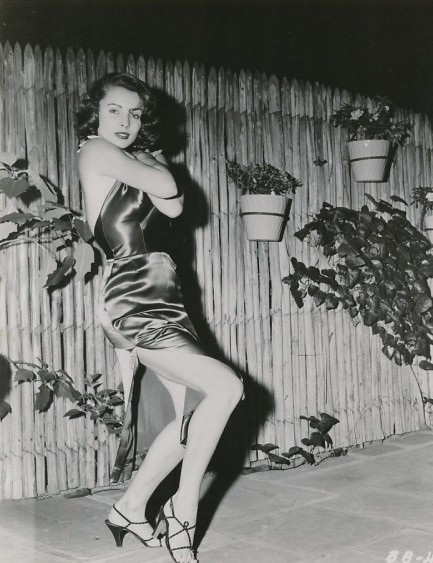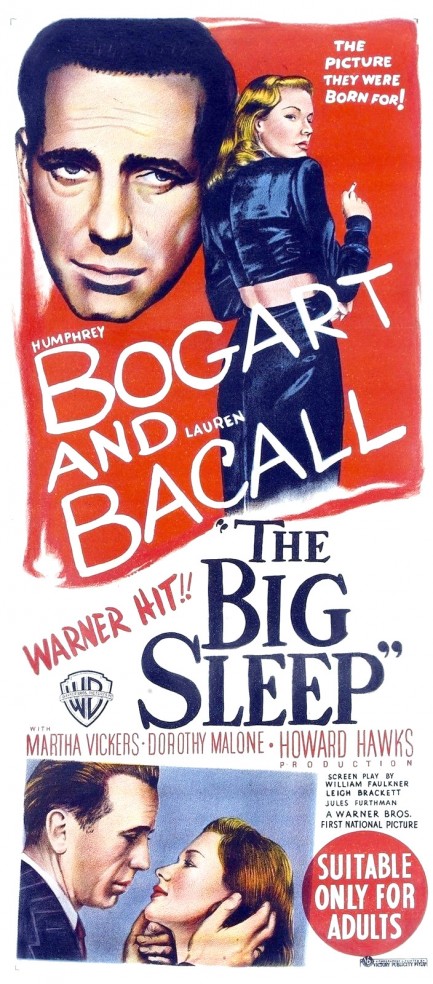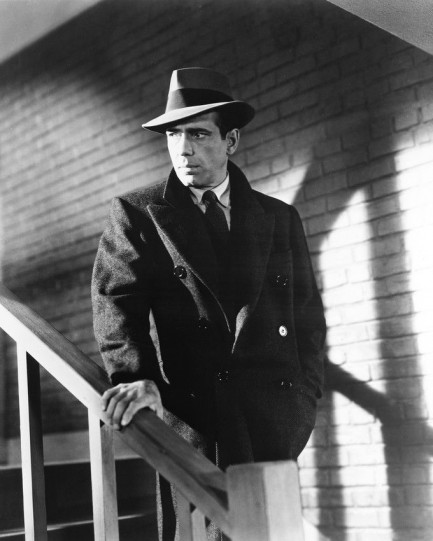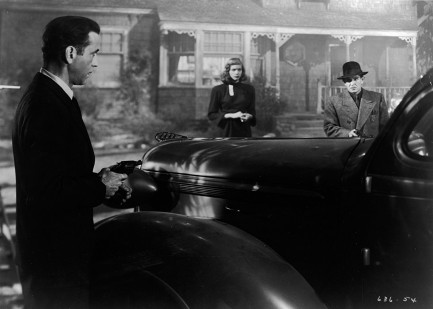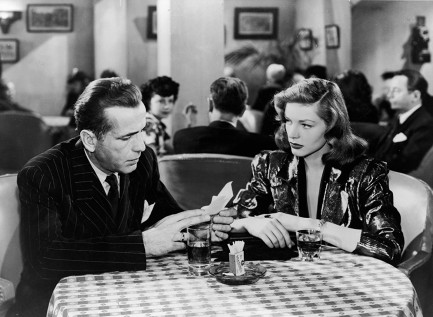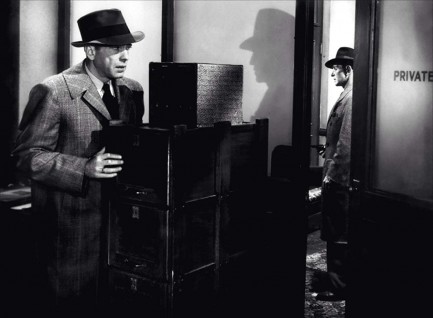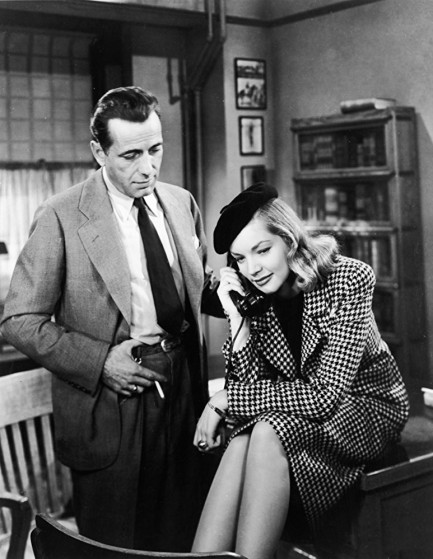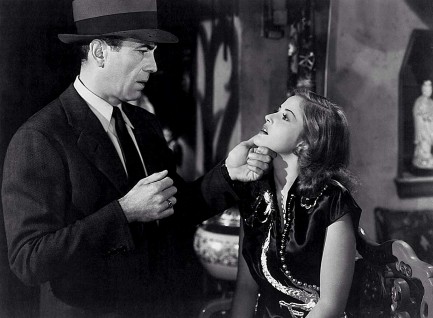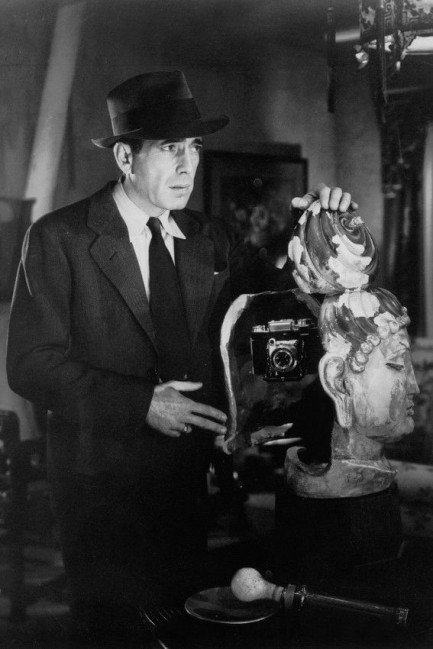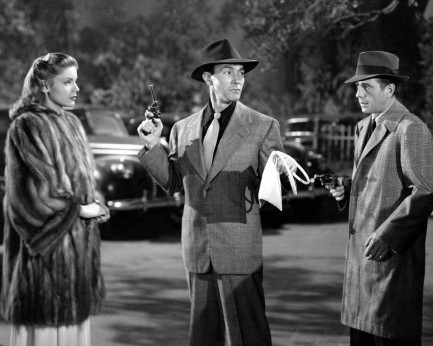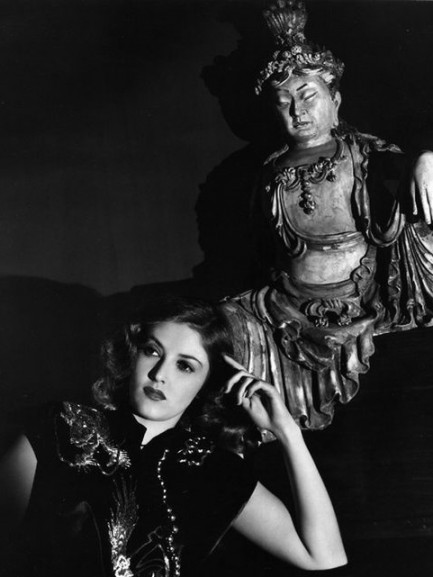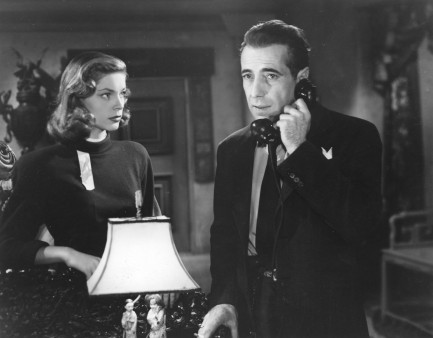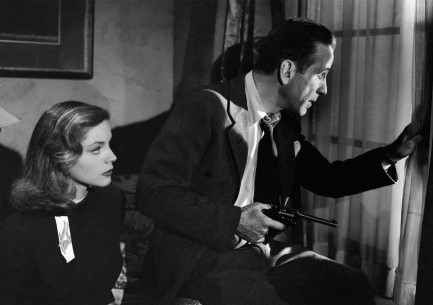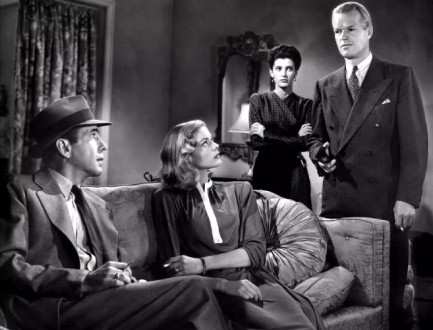 Many miles to go before you Sleep. 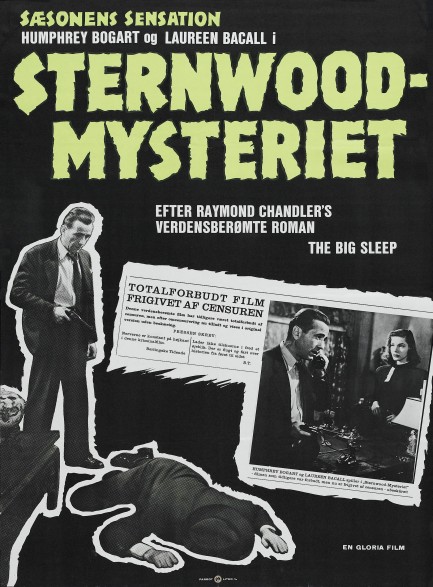
This unusual Danish photo poster was made for Sternwood-mysteriet— Actually, a quick digression. That would be a good pub quiz question, wouldn't it? It could be part of a foreign titles round. “Okay, next question. What is the original title of the film released in Denmark as Sternwood-mysteriet?” Did we ever mention that PSGP has hosted numerous pub quizzes? That's why it came to mind. Funny story: He once lost a bet and had to host one in a Speedo. Anyway, any noir fan would get the question right—Sternwood-mysteriet is better known as The Big Sleep, starring Humphrey Bogart and someone named “Laureen” Bacall.
The movie didn't premiere in Denmark until today in 1962. Why? Apparently it was banned. There could be a couple of different reasons why, or both at once. Bogart's character Sam Spade gets laid—by implication—with a bookstore clerk played by the lovely Dorothy Malone. And a central part of the complex mystery deals with illicit photos, implied to have been pornographic shots of a drugged Martha Vickers. The bookstore seduction isn't in Raymond Chandler's source novel, but the smut photos are. Haven't seen the movie? You should watch it. But carefully. 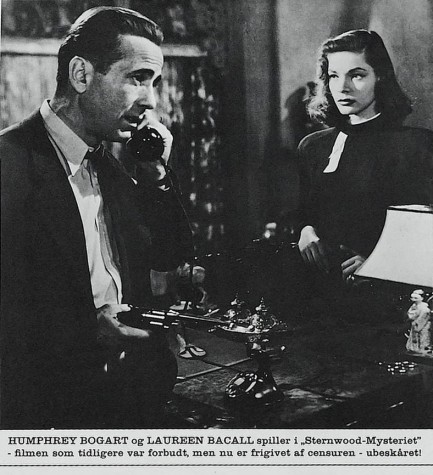 Humphrey Bogart and Lauren Bacall play in the “Sternwood-Mystery” - the film that was previously banned but is now released by the censor - uncut! Humphrey Bogart and Lauren Bacall play in the “Sternwood-Mystery” - the film that was previously banned but is now released by the censor - uncut!
 Pageant winner fulfilled show business and personal ambitions. Then things went wrong. 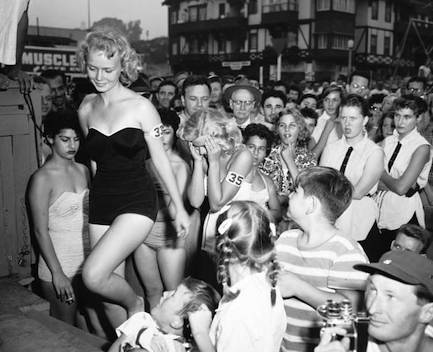 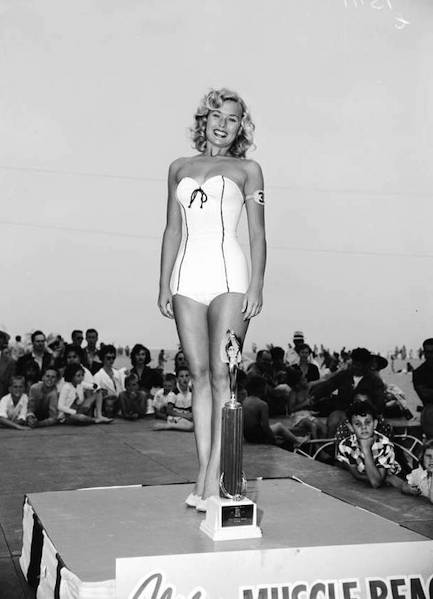 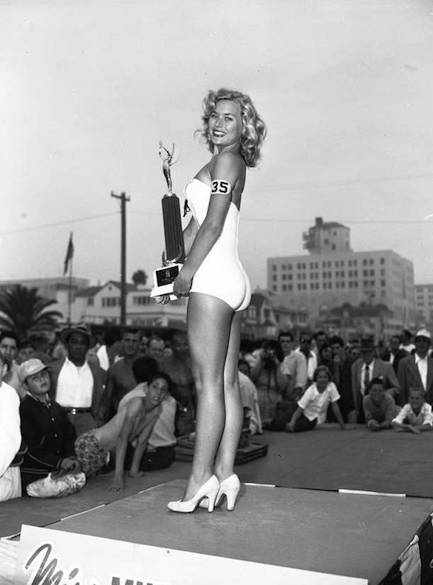
Beauty pageants are a bit silly, perhaps, but the participants are generally ambitious people who see them as stepping stones to show business or modeling. And in mid-century Los Angeles in particular, even minor pageants occasionally led to stardom. In the above photos high school student Barbara Thomason wins the crown of Miss Muscle Beach 1954. Listed at 5 foot 3 inches and 110 pounds, she was a body-building enthusiast, and in the shot just below she celebrates her hard fought win by pumping a bit of iron while photographers click away and a crowd watches.
Did Thomason's victory lead to bigger things? Maybe not directly, but it probably helped. She was a habitual pageant participant who also won Miss Huntington Beach, Miss Van Ness, Miss Bay Beach, Miss Southwest Los Angeles, Miss Pacific Coast, Queen of Southern California,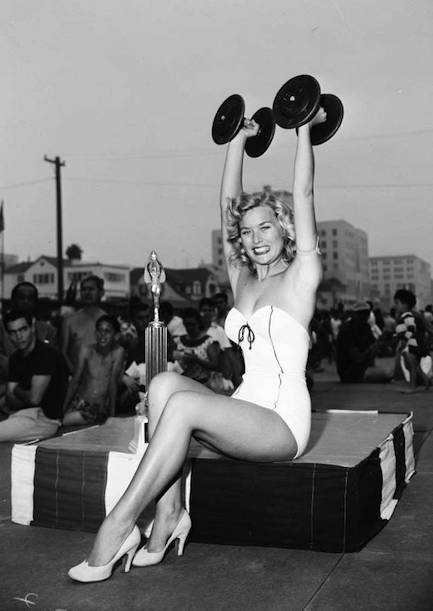 and ten other titles. All that winning finally got her noticed by Hollywood movers and shakers. In 1955, performing under the name Carolyn Mitchell, she made her acting debut on the television show Crossroads, and in 1958 co-starred in two Roger Corman b-movies, The Crybaby Killer and Dragstrip Riot. and ten other titles. All that winning finally got her noticed by Hollywood movers and shakers. In 1955, performing under the name Carolyn Mitchell, she made her acting debut on the television show Crossroads, and in 1958 co-starred in two Roger Corman b-movies, The Crybaby Killer and Dragstrip Riot. But she put her career on hold when she met and married a star—Mickey Rooney, who was nearly seventeen years her senior and nearly two inches her junior. Their union had problems from the beginning. The couple married secretly in Mexico because Rooney was still awaiting a divorce from actress Elaine Mahnken. They would have to wait almost two years before the law allowed them to wed in the U.S. Legalities, though doubtless bothersome, were the least of their problems. During the next six years, during which Thomason bore four children, Rooney indulged in numerous affairs.
It should probably be noted here that Thomason was Rooney's fifth wife. Among the predecessors were goddesses like Ava Gardner and Martha Vickers. We don't know what Thomason's expectations of marriage were, but clearly Rooney didn't know the meaning of the phrase “for better or worse.” The affairs continued, and eventually Thomason did the same with a temperamental Yugoslavian actor named Milos Milosevic, who performed under the name Milos Milos. But what was good for goose was not 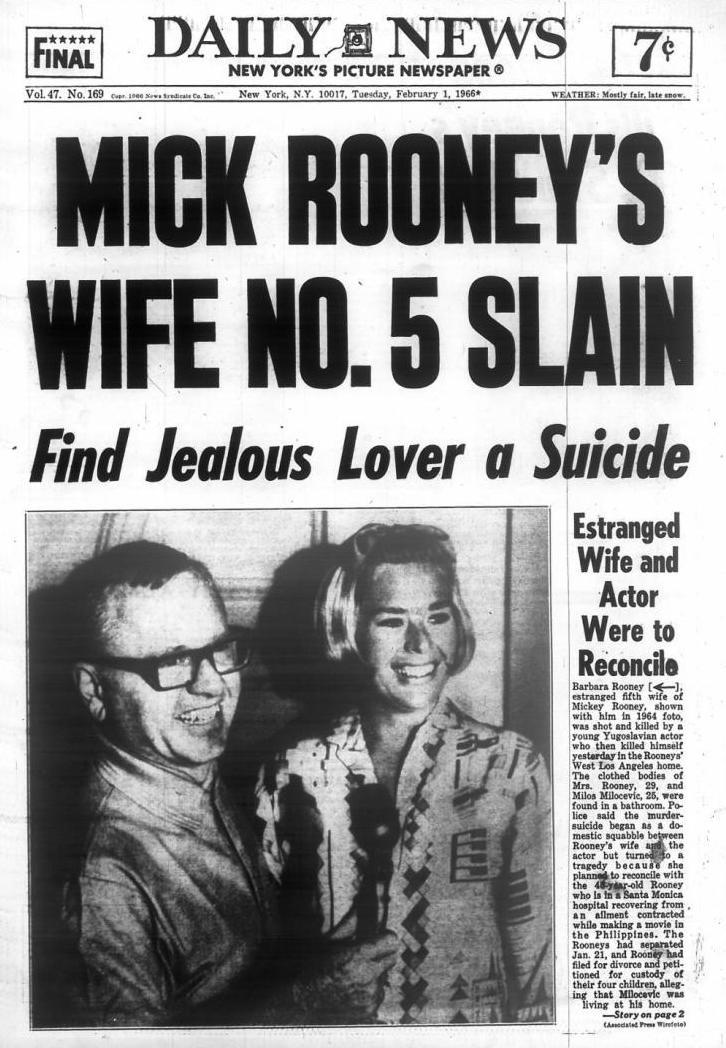 good for the gander—Rooney found out about these international relations, moved out of the Brentwood house he shared with Thomason, and filed for divorce, charging mental cruelty. The nerve, right? good for the gander—Rooney found out about these international relations, moved out of the Brentwood house he shared with Thomason, and filed for divorce, charging mental cruelty. The nerve, right?
On the morning of January 31, 1966, while Rooney was in St. John's Hospital recovering from an intestinal infection he'd picked up in the Philippines, Thomason and Milosevic were found together on the bathroom floor of the Brentwood house, dead. Milosevic had shot Thomason under the chin and killed himself with a temple shot using a chrome-plated .38 Rooney had bought in 1964. The consensus is Thomason had decided to dump Milosevic and he flipped out.
The photos below show Thomason on Muscle Beach during her halcyon years there, a mere teenager, frolicking in the sun, filled with youthful hopes for a good life. She won beauty titles, acted in films, married an icon, and had four children. Any of those accomplishments would have been good legacies. Instead her death at twenty-nine overshadowed all the rest, and she's remembered as another celebrity murder victim, Hollywood style, which is always somehow both sensational and banal. 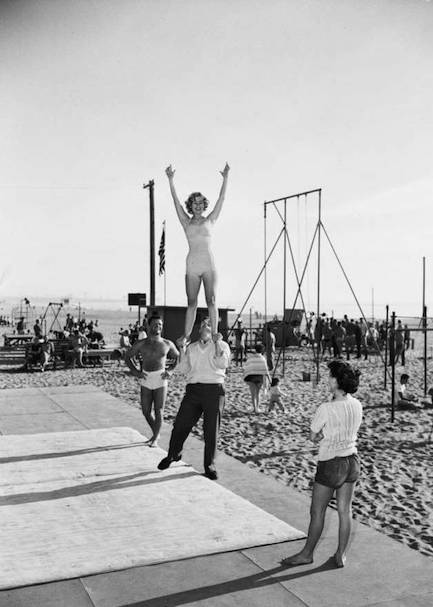 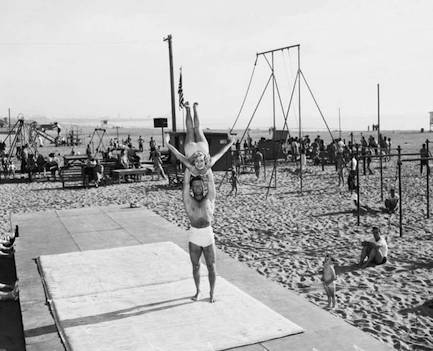 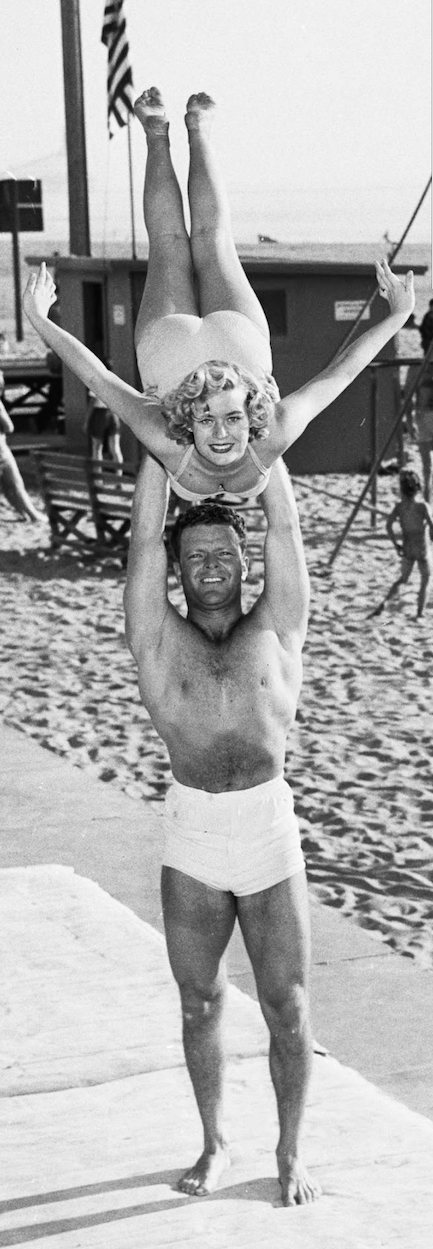
 These thieves will probably steal the entire film festival. 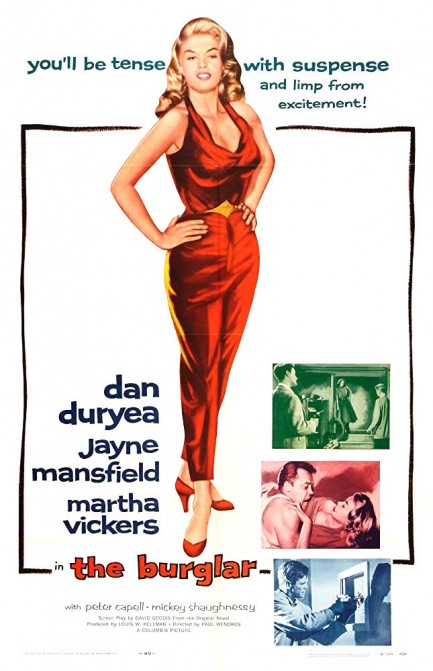
This poster for the 1957 film noir The Burglar looks pretty low rent, doesn't it? The movie is modestly budgeted too, but money isn't everything when it comes to making art. The film, which plays at Noir City tonight, opens with a nocturnal suburban heist that leaves a trio of break-in artists headed by Dan Duryea with a gaudy piece of $150,000 jewelry they can't hope to fence until the heat goes down. That means they have to wait, and with this mismatched group that means the pressure goes up. There's a fourth person in the mix. Jayne Mansfield, star of the promo poster, is the crew's eyes and ears, casing places they want to rob. The Burglar is an early role for Mansfield, coming three years into her career, but it also arrived in cinemas a year after the big Twentieth Century Fox musical comedy The Girl Can't Help It, which featured her in full sex kitten mode, with the corset-crunched hourglass figure and helium voice. The irony is The Burglar was actually filmed before The Girl Can't Help It, but Mansfield's milieu had been set in stone by Fox's expensive hit. The Burglar challengingly asks her to be by turns innocent, tough, frustrated, terrified, and vulnerable. Basically, it asks too much this early in her career. But she gets by far the best line, when asked by Duryea at one point why she's being so fickle and difficult:
“You don't know? You really don't know? Well look at me! I'm a woman! I'm flesh and blood and I've got feelings!”
That one might bring the house down. A better actress might have nailed this dialogue, which was written by David Goodis working from his own novel, but as delivered by Mansfield the bit is funny, and actually goes on to hit other comedic notes. Though The Burglar demanded too 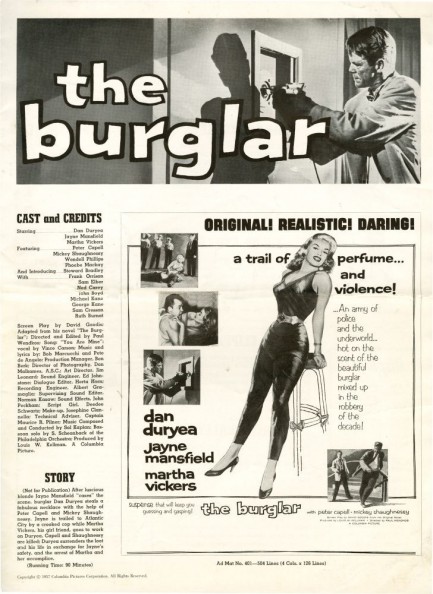 much of the inexperienced Mansfield, she hurts the final product little, because the movie comes across like a sneaky parody anyway. With one partner in Mickey Shaughnessy who's creepy and rapey, and another in Peter Capell who's as highly strung as a banjo, head crook Duryea has assembled by far the worst gang in film noir history. There's no thought—not even for a second—that these three are going to achieve their goals. much of the inexperienced Mansfield, she hurts the final product little, because the movie comes across like a sneaky parody anyway. With one partner in Mickey Shaughnessy who's creepy and rapey, and another in Peter Capell who's as highly strung as a banjo, head crook Duryea has assembled by far the worst gang in film noir history. There's no thought—not even for a second—that these three are going to achieve their goals. But the movie is 190 proof noir—a knock-you-on-your-ass cocktail of nearly everything cool about the form. You get voiceover, flashback, nightmares, a loyal good girl led astray plus a femme fatale played by Martha Vickers, outrageous shadows, angular framing, hard-boiled dialogue, one crooked-as-fuck cop, a brassy, jazzy score, and beautiful night-for-night location work from director Paul Wendkos and cinematographer Don Malkames. And as bonuses you get a funhouse scene that's pure genius, and a high diving horse. The Burglar is sure to please all fans of old movies, but for noir lovers and lucky Noir City attendees in particular, it's nothing less than a landmark. You can learn a bit more about the film in the post below. 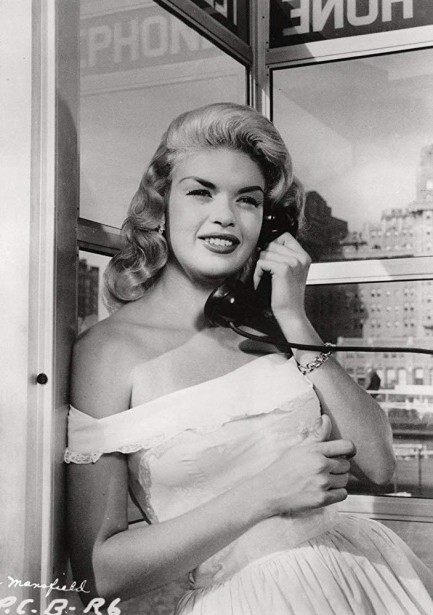 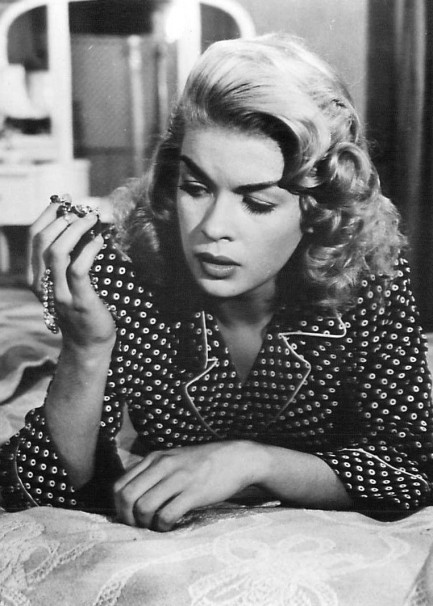 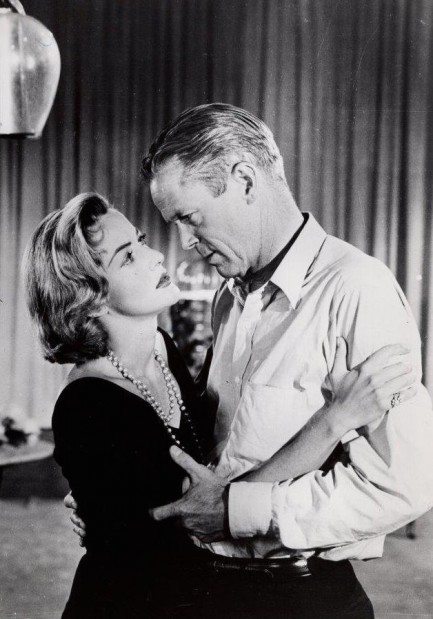 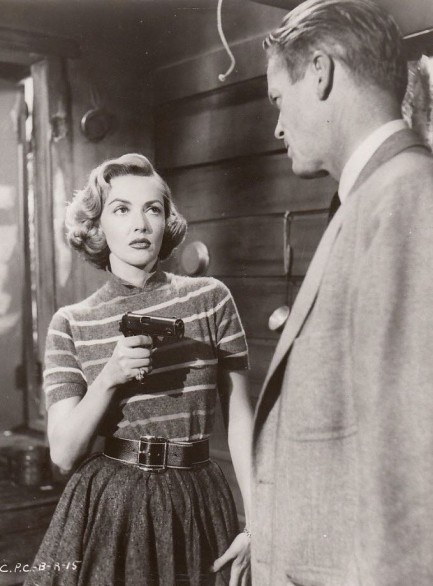 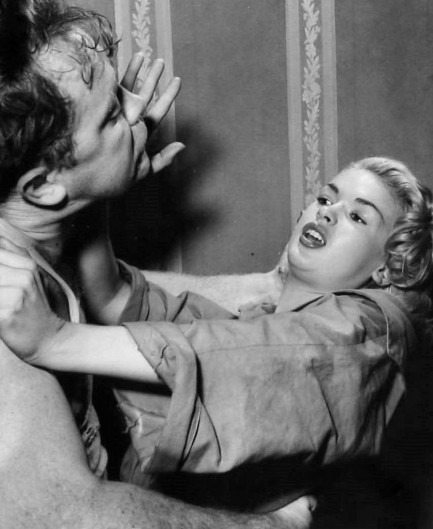 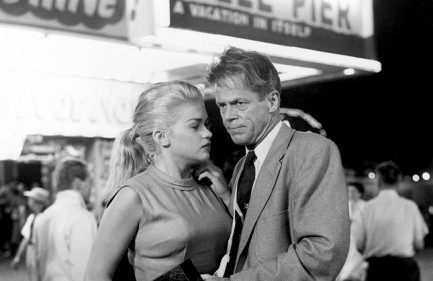 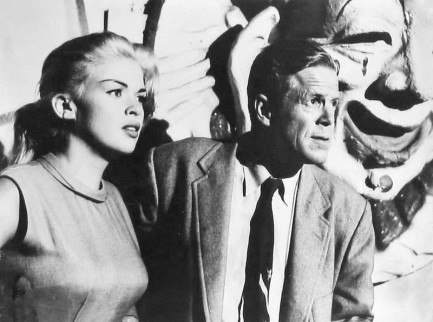
 Yeah! This is so fun! These photos will really make people remember me! 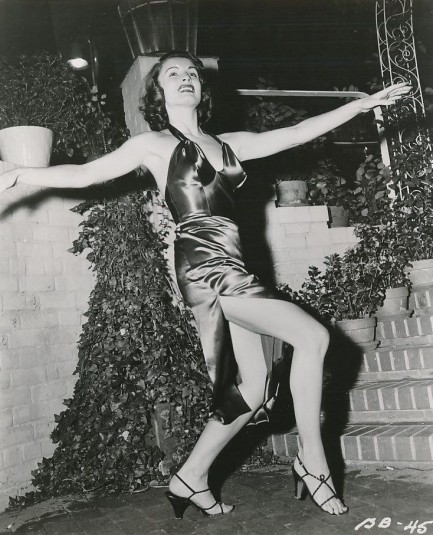
If you look around the internet literally every site from IMDB to Ebay will tell you this is U.S. actress Martha Vickers dancing for a photo series made while filming the 1955 United Artists drama The Big Bluff. But surprise! Everyone is wrong. This isn't Vickers. This is actually Rosemarie Stack. It's pretty obvious. She and Vickers don't look alike anyway, and Vickers is blonde in the film, not brunette, but also, Stack plays a hot-blooded showgirl named Fritzi Darvel while Vickers plays an invalid, so clearly this is Stack doing a little riff on her role as a dancer. What are we the internet police? Hah, no. But we thought the forgotten Miss Stack deserved to have her credit restored for starring in this great series. Make a note. And the movie? Meh. Update: IMDB has now updated its info. It's nice to have influence.
 I've got a handful of sleeping pills for you. 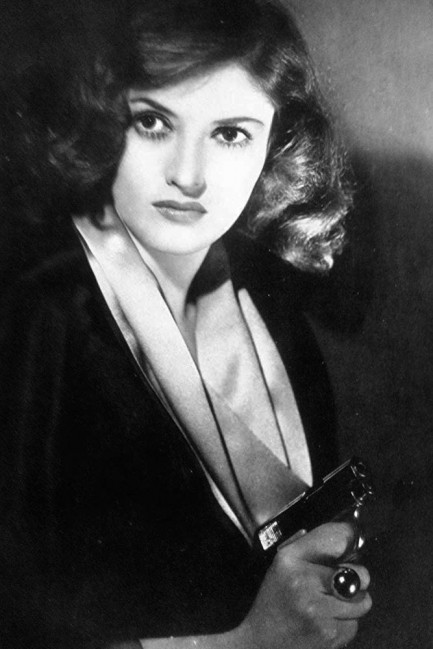
Since we brought up The Big Sleep we might as well share this nice image of Martha Vickers armed and dangerous. Though this was made for the film, it isn't a still frame, but rather a promo image unrelated to the action. She actually does brandish a gun at one point, but it's a 1930s Iver Johnson revolver rather than the automatic you see here. We've shared several other images of Vickers, all rare, all beautiful. See the top three here, here, and here.
 Vickers makes any time and place even better. 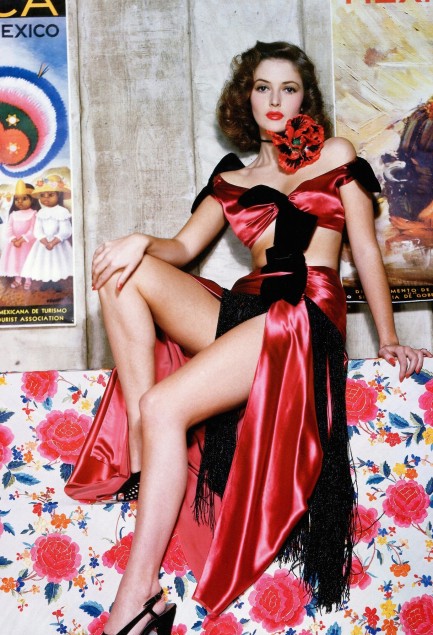
Above is a stunning shot of U.S. born actress Martha Vickers, who we described a while back as a rare beauty. We stand by that statement. This image was made in 1946 when she was filming the musical The Time, the Place and the Girl.
 O Século Ilustrado showcases a top Hollywood beauty. 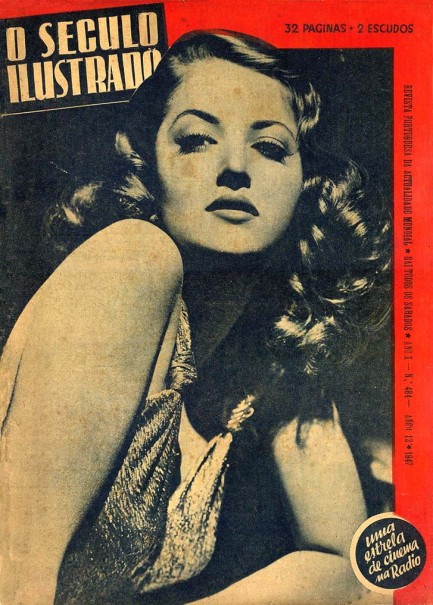
The Portuguese magazine O Século Ilustrado was the weekly supplement of Lisbon's daily newspaper O Século, which was published between 1880 and 1978. There's some pop culture and cinema content in the magazine, but it wasn't filled with thrilling visuals. The covers were sometimes an exception, though, such as this one that hit newsstands today in 1947 featuring an amazing shot of U.S. actress Martha Vickers—billed as “a star of cinema and radio.” During her short life she made a lasting impression in movies like The Big Sleep and Ruthless. The promo photo O Século Ilustrado editors used to create their cover appears below, and you can see that Vickers was a rare beauty. She died of cancer in 1971 aged forty-six. 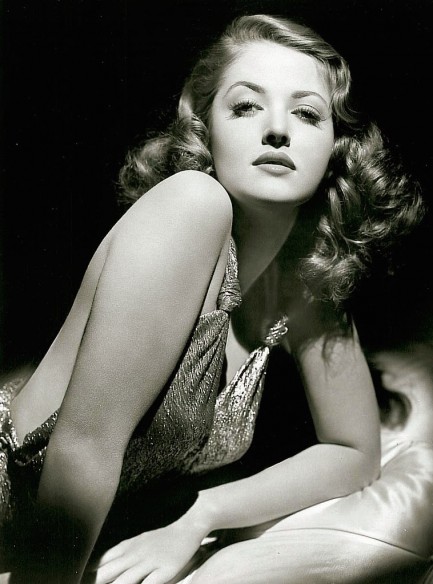
 You know what they say about men with big hats. 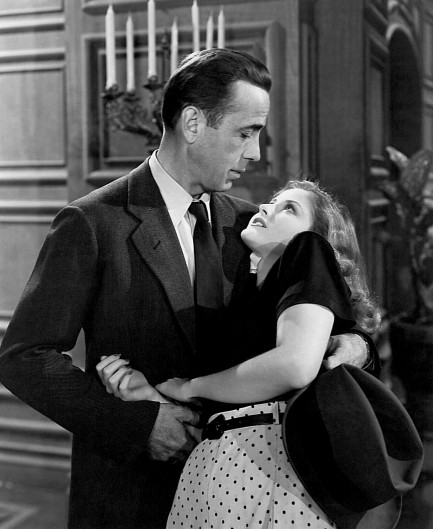
In this production still from 1946's The Big Sleep featuring a bizarrely large hat in the foreground, Martha Vickers falls into Humphrey Bogart's arms. Bogart, under normal circumstances, would have been smart to likewise fall for Miss Vickers, but his other choice in the movie was Lauren Bacall. Which means it was she who got hat, head, and all the rest.
 There's nothing up my sleeve except more of me. 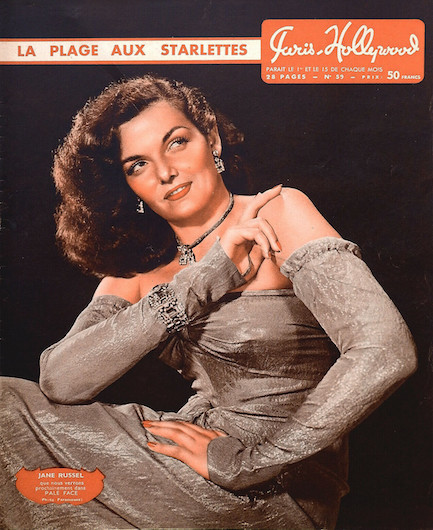 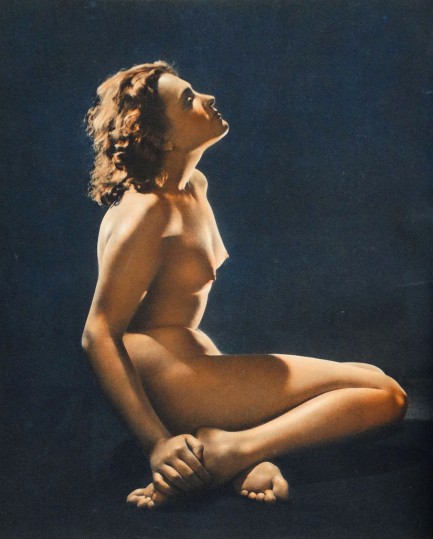 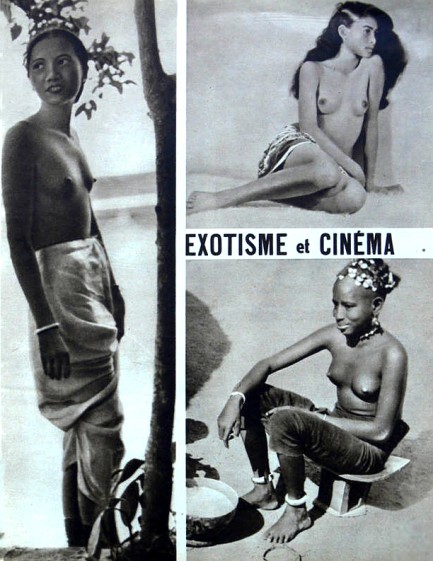 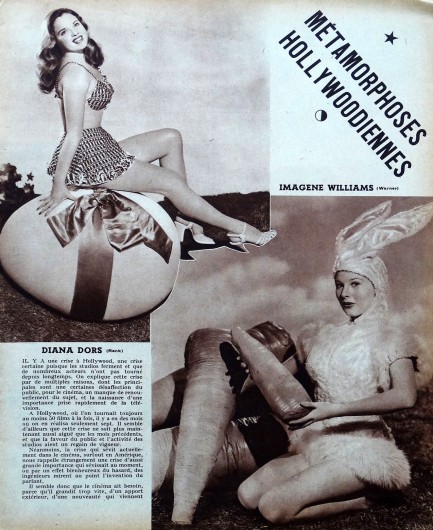 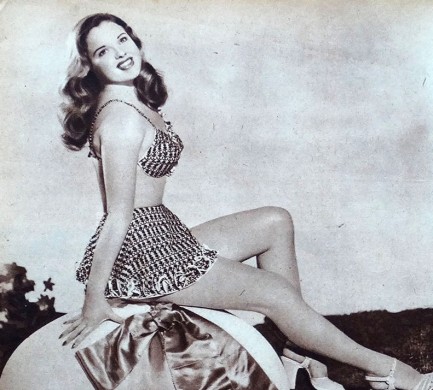 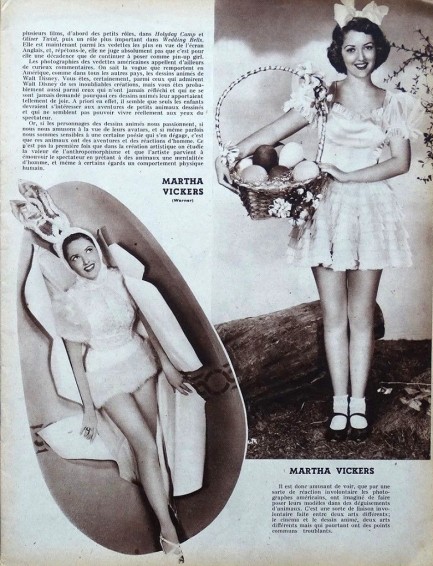 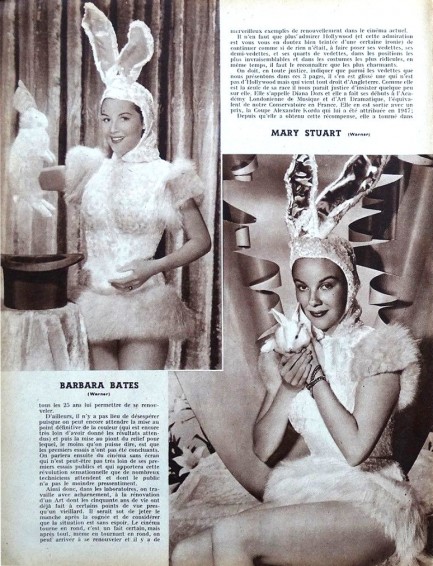 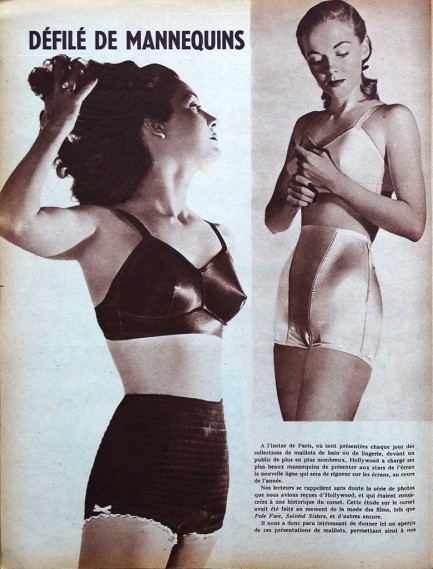 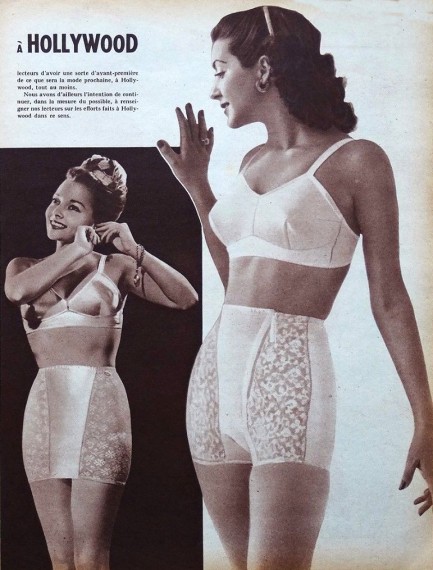 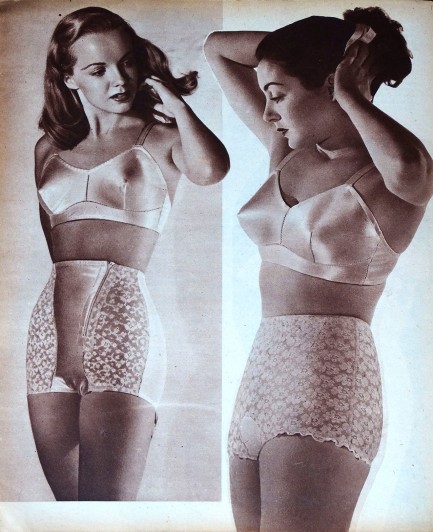 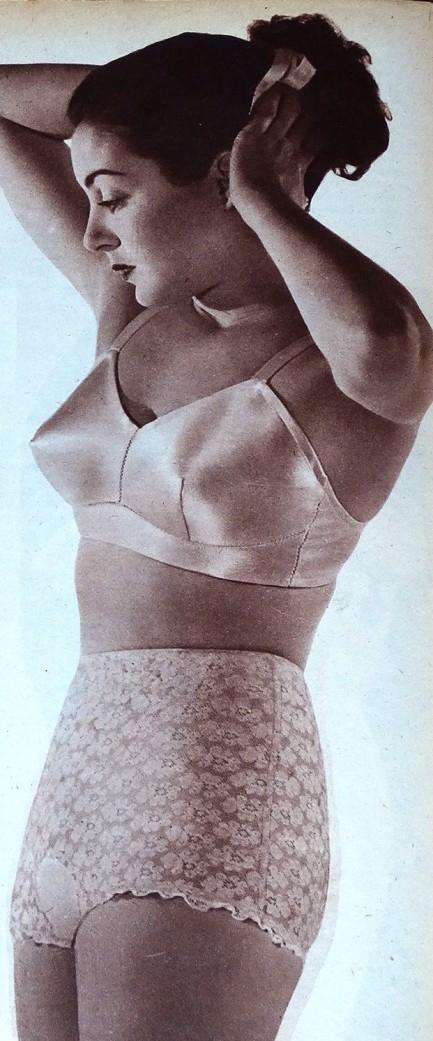 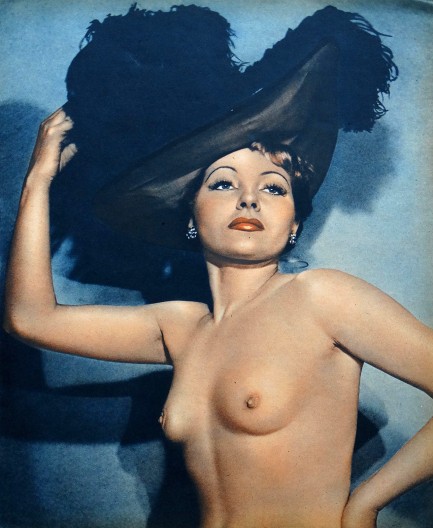 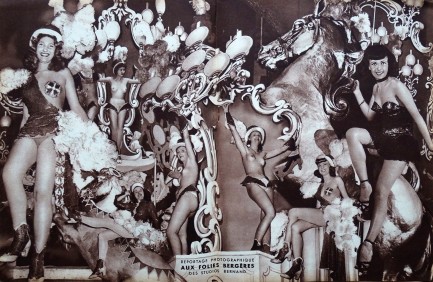 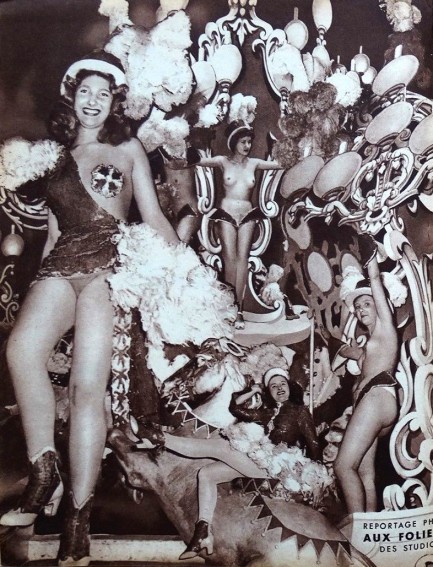 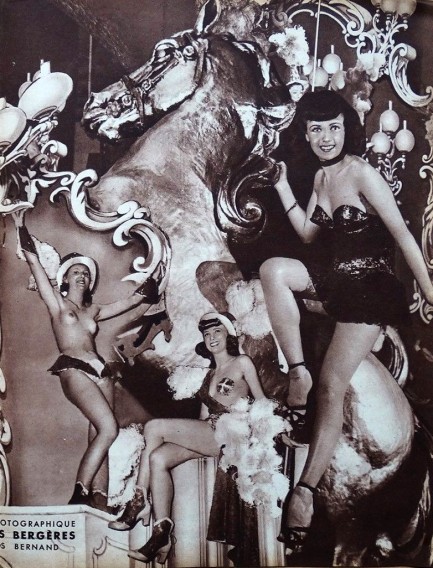 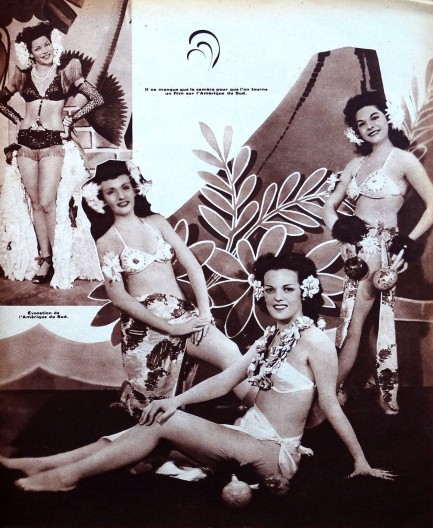 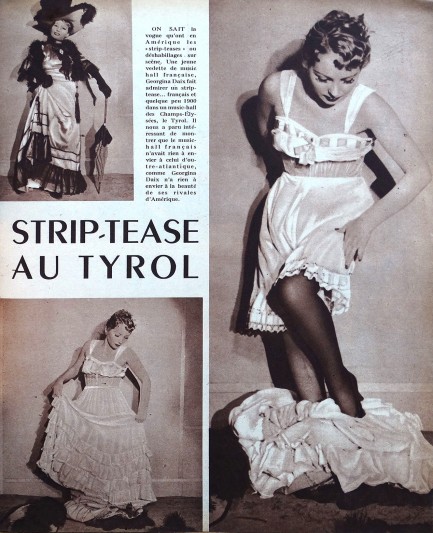 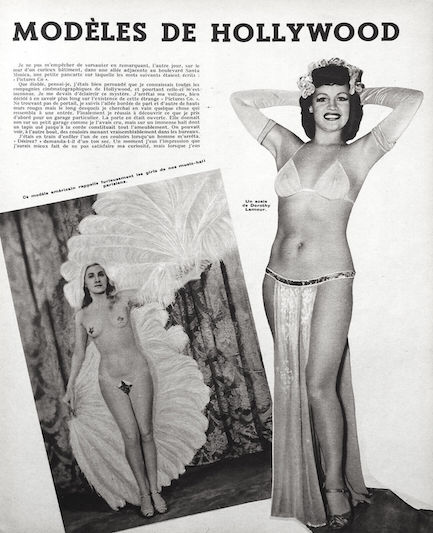 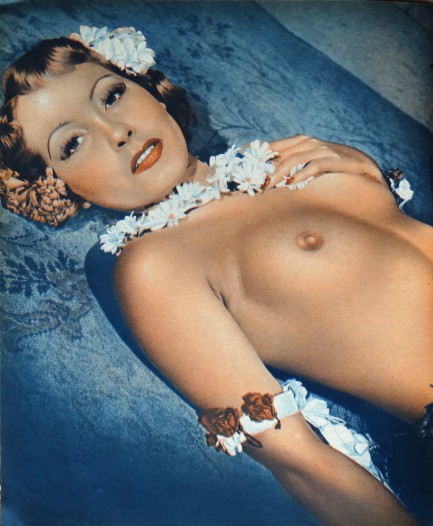 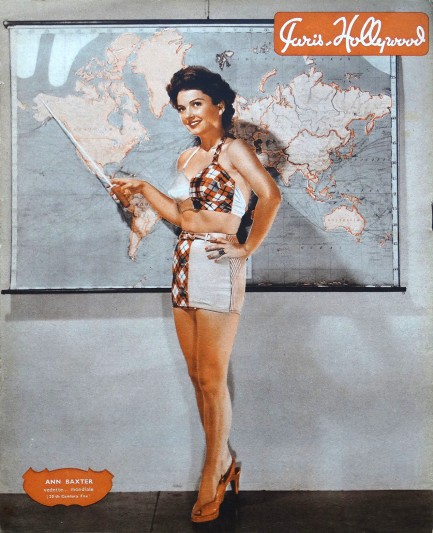
Above, Paris-Hollywood magazine published in 1949, with a bare-shouldered Jane Russell on the front cover and Anne Baxter (spelled Ann by editors) gracing the rear. Baxter is pointing out Alaska on a wall map, probably explaining that she'd need a parka and snow shoes if she ever went there, rather than the undies and heels she's wearing. Inside the issue you get showgirls, models in lingerie, and celebs dressed as bunnies. Was it Easter? No idea, because Paris-Hollywood came without publication dates during these years. However, the front cover noted that Russell was starring as Calamity Jane in the film Pale Face, aka The Paleface. Since that appeared in France in mid-February and promotional efforts usually occur in advance of a film's premier, or at least around its opening date, we suspect the issue was published in February or March of 1949.

|
 |

The headlines that mattered yesteryear.
2003—Hope Dies
Film legend Bob Hope dies of pneumonia two months after celebrating his 100th birthday. 1945—Churchill Given the Sack
In spite of admiring Winston Churchill as a great wartime leader, Britons elect
Clement Attlee the nation's new prime minister in a sweeping victory for the Labour Party over the Conservatives. 1952—Evita Peron Dies
Eva Duarte de Peron, aka Evita, wife of the president of the Argentine Republic, dies from cancer at age 33. Evita had brought the working classes into a position of political power never witnessed before, but was hated by the nation's powerful military class. She is lain to rest in Milan, Italy in a secret grave under a nun's name, but is eventually returned to Argentina for reburial beside her husband in 1974. 1943—Mussolini Calls It Quits
Italian dictator Benito Mussolini steps down as head of the armed forces and the government. It soon becomes clear that Il Duce did not relinquish power voluntarily, but was forced to resign after former Fascist colleagues turned against him. He is later installed by Germany as leader of the Italian Social Republic in the north of the country, but is killed by partisans in 1945.
|

|
|

It's easy. We have an uploader that makes it a snap. Use it to submit your art, text, header, and subhead. Your post can be funny, serious, or anything in between, as long as it's vintage pulp. You'll get a byline and experience the fleeting pride of free authorship. We'll edit your post for typos, but the rest is up to you. Click here to give us your best shot.

|
|


 Humphrey Bogart and Lauren Bacall play in the “Sternwood-Mystery” - the film that was previously banned but is now released by the censor - uncut!
Humphrey Bogart and Lauren Bacall play in the “Sternwood-Mystery” - the film that was previously banned but is now released by the censor - uncut!



 and ten other titles. All that winning finally got her noticed by Hollywood movers and shakers. In 1955, performing under the name Carolyn Mitchell, she made her acting debut on the television show Crossroads, and in 1958 co-starred in two Roger Corman b-movies, The Crybaby Killer and Dragstrip Riot.
and ten other titles. All that winning finally got her noticed by Hollywood movers and shakers. In 1955, performing under the name Carolyn Mitchell, she made her acting debut on the television show Crossroads, and in 1958 co-starred in two Roger Corman b-movies, The Crybaby Killer and Dragstrip Riot. good for the gander—Rooney found out about these international relations, moved out of the Brentwood house he shared with Thomason, and filed for divorce, charging mental cruelty. The nerve, right?
good for the gander—Rooney found out about these international relations, moved out of the Brentwood house he shared with Thomason, and filed for divorce, charging mental cruelty. The nerve, right?




 much of the inexperienced Mansfield, she hurts the final product little, because the movie comes across like a sneaky parody anyway. With one partner in Mickey Shaughnessy who's creepy and rapey, and another in Peter Capell who's as highly strung as a banjo, head crook Duryea has assembled by far the worst gang in film noir history. There's no thought—not even for a second—that these three are going to achieve their goals.
much of the inexperienced Mansfield, she hurts the final product little, because the movie comes across like a sneaky parody anyway. With one partner in Mickey Shaughnessy who's creepy and rapey, and another in Peter Capell who's as highly strung as a banjo, head crook Duryea has assembled by far the worst gang in film noir history. There's no thought—not even for a second—that these three are going to achieve their goals.








